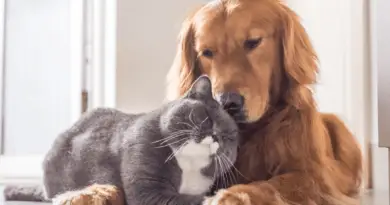Last modified on March 16th, 2020 at 9:54 am
How To Keep Petsitting As Eco-Friendly As Possible
When we think of going eco-friendly, some of the first things that come to mind are lifestyle changes like minimizing our use of plastic or switching to environment-friendly fuel. But while making personal tweaks on our habits is a big step towards helping Mother Earth, these changes should be applied in every aspect of our lives—like us being pet owners.
As pet parents, we automatically have the responsibility to help give our pets a ‘greener’ way of living. Don’t know where and how to start? Read the rest of the article for ways on how you can continue caring for your pet while giving the planet equal love.
Adopt, don’t shop.
Going eco-friendly doesn’t only involve going for pro-planet pet materials and supplies. The very concept alone can be applied to our general approach towards animals. Adopting is one of the best ways you can help the environment because not only do you help stray animals get off the streets, you also stop supporting animal breeders that use unethical methods to stay on business. Check out your local animal shelters the next time you get the inspiration to get a fur baby or extend your four-legged family.
Neuter your pets.
Unless you are set on growing your extended fur family, it is best to neuter or spay your pet to prevent any unwanted births. Doing this can help you bring down the number of strays that may or may not have the possibility of being adopted by someone in the future.
Go for sustainable food.
Just like how us humans are being encouraged to go sustainable with our food choices, you can also help the environment by choosing sustainable food for your pets. Go for properly certified organic products that are produced without genetically-modified ingredients and synthetic pesticides. Even as simple as choosing the right type of food for your pet can help. When selecting cat food, for example, going for chicken-flavored food is considered better than choosing beef because chicken production uses less land and water resources than producing beef. Sustainably-harvested seafood like mackerel and sardines are also a better choice than tuna.
Reduce their wastes.
Pet sitting produces its by-products, which means you also need to be conscious of everything you use and buy for your pet. Adopting habits like buying food sold in recyclable materials is one way you can do this. Buying stocks in bulk is also a good idea because you help save in transport and packaging materials.
For cat owners, managing your use of litter is a good way to help the environment. Cats go through around 45 kg of litter every year which can end up unrecycled in disposal centers. To minimize your use of cat litter, try to clean their poop and pee regularly so you can go longer without refilling now and then. When cleaning poop, use compostable and biodegradable poop bags instead of regular plastic bags, too.
It is also better to go for litter made with materials like beet pulp, paper, and wood which are renewable and friendlier to the environment. You can also skip on using disposable litter boxes and liners. Even if they are biodegradable, their limited use means you’re still producing a huge amount of trash. Buy litters that are made with recyclable plastic and wash them regularly with some mild soap and water instead. Want to entirely drop the use of litters? You can also toilet train your cat. Just make sure that you can safely dispose of the waste before switching to this. NEVER dispose of your cat’s litter by flushing it down the toilet carelessly. Cat feces can carry parasites that can contaminate soil and water and cause harm to humans and other animals.
Go green with their toys.
The next time you buy toys for your fur baby, make sure that you go for those made from natural and organic materials. You can even be a little creative and make your own toys out of recycled things like toilet paper rolls and other used paper materials if you’re really dedicated to being an eco-warrior.
You can also try to maximize the life of your pet’s things so you don’t need to buy a new one now and then. For example, you can make your cat’s scratching post last longer by cleaning it regularly and trimming its loose threads. When it’s finally time to change it, you can go for scratchers made from recyclable materials like cardboard instead.
Make a compost.
The most sustainable way to take care of your little fur baby’s waste is to bring it back to the Earth. While we did mention that cat poop can be harmful to soil and water, it can be used as compost when you process it correctly. Cat waste should be left to compost for at least a year and a half for it to be safe from carrying parasites.
When it comes to cat litter, you can only compost those that are made from natural materials like wheat, pine, and sawdust. Crystalline, sand-, and clay-based litters are not really ideal to be composted and applied on soil because they have synthetic components that can leak to it and cause more harm. A lot of pros even strongly advise against the use of clay litter because it is obtained by strip mining which is very harmful to the environment.
Use eco-friendly pet cleaning products.
Swap your pet’s regular shampoos with products made with gentler and environmentally-friendly ingredients. Regular cleaning products for pets are usually laced with toxic chemicals so choosing a more eco-friendly one can actually be safer for your pet. Make it a habit to check the ingredients list of the bottles you buy the next time you go shopping for their essentials.
As a pet parent, it is part of your responsibility to help the same environment that supports the animals of this planet. It may sound cheesy, but even simple tweaks in your choices can do a lot in making this world a better place for them.
Do you want to read more articles that can help you become a better pet parent? Check out purrfectnpawesome.com for more blogs like this.




